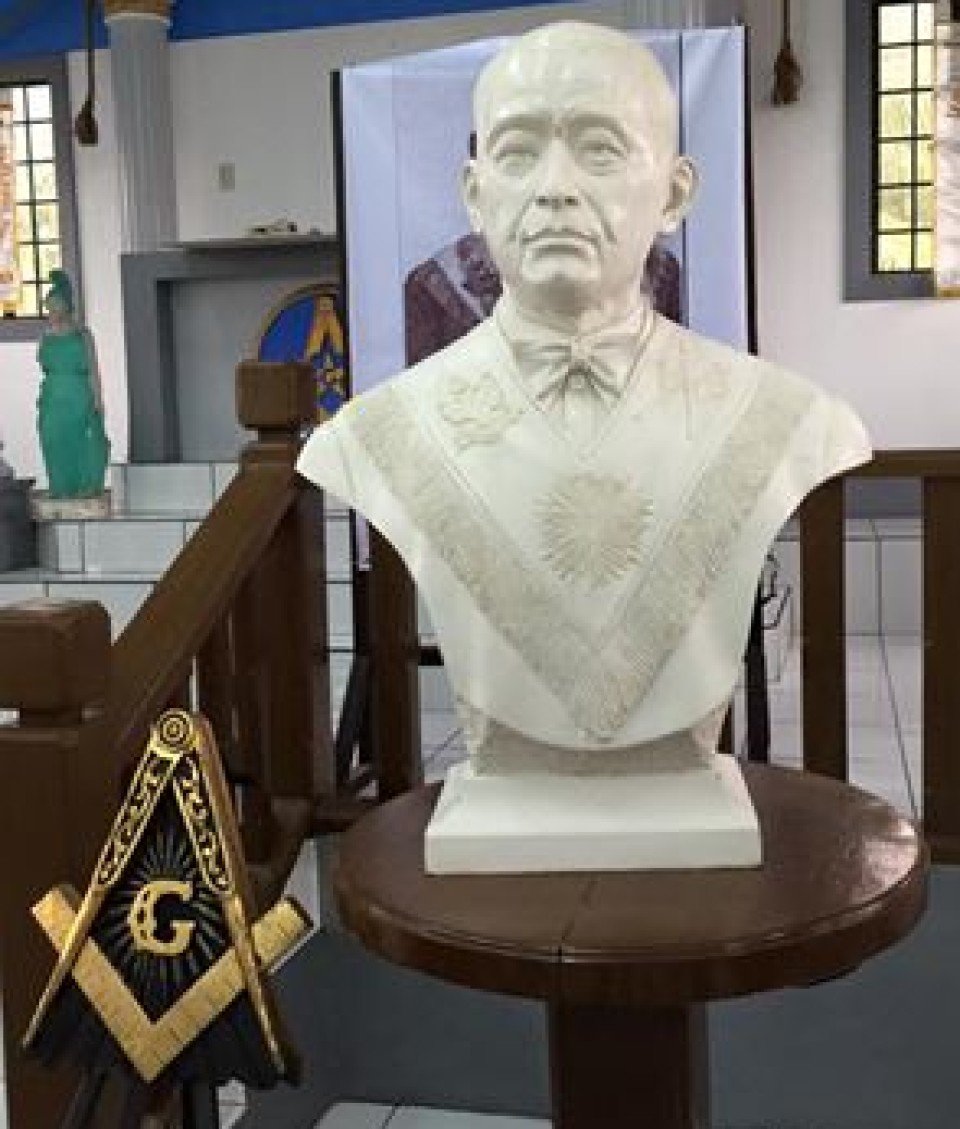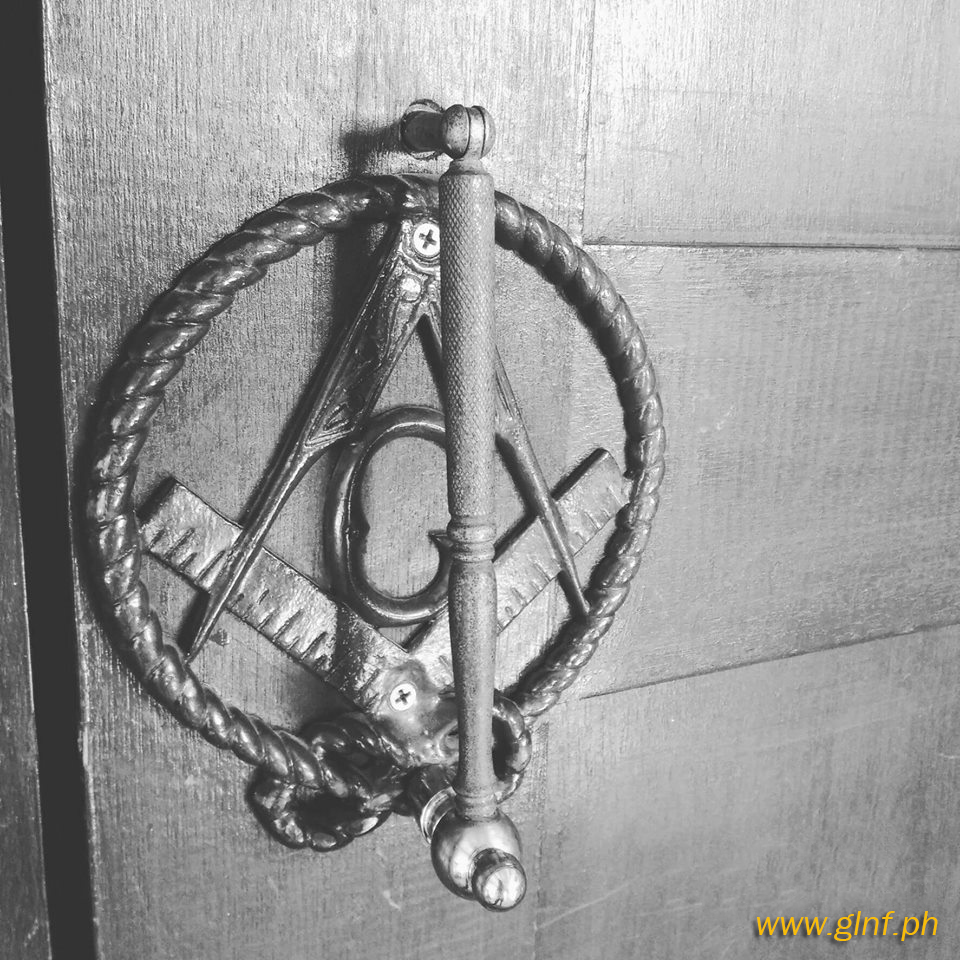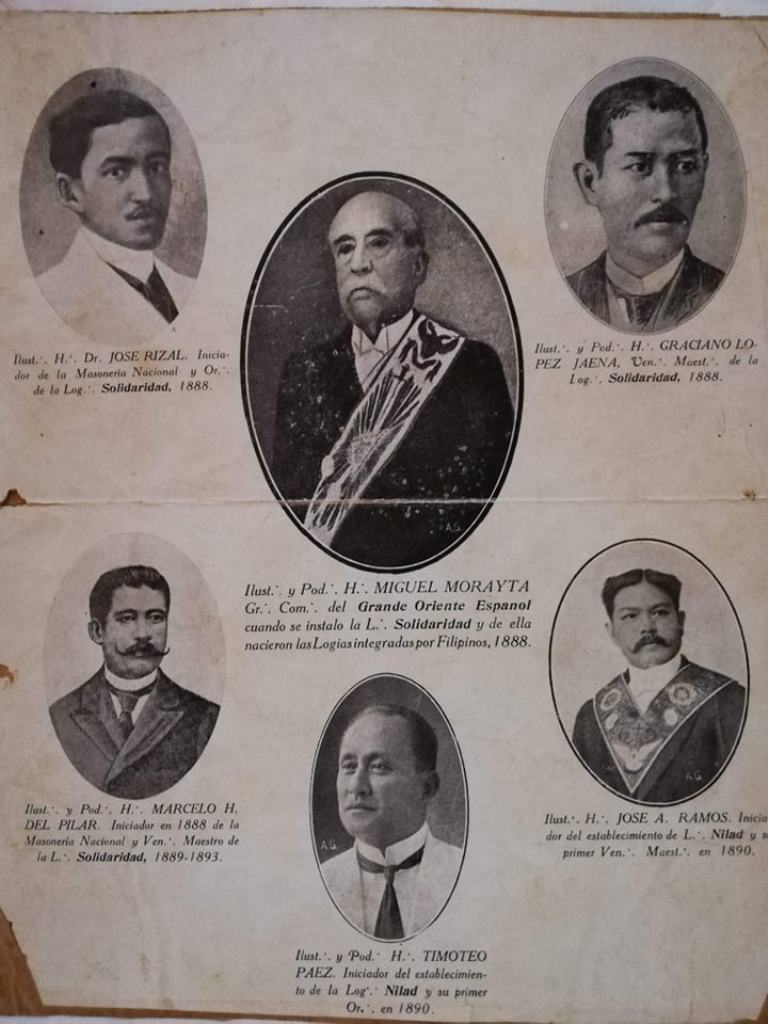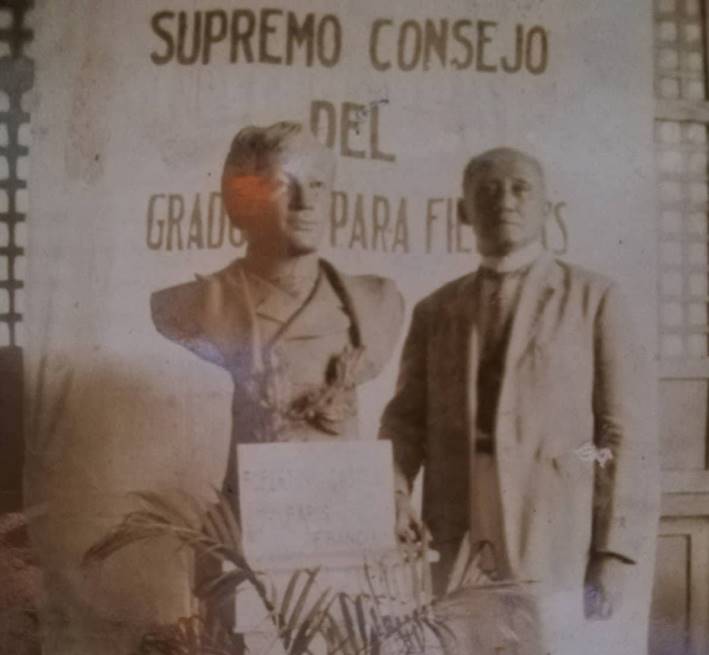BRIEF HISTORY OF AASR FREEMASONRY
BRIEF HISTORY OF THE A:.A:.S:.R:. OF FREEMASONRY
by: Her Felix D. Ramos, Jr., Gr. 18
Secretary, Logia Magdalo No. 79
Gran Logia Nacional de Filipinas
A. FOUNDING THEORIES:
a. Crusades by Chevalier Ramsay (Oration of Ramsey in 1740 ).
b. KnightsTemplars
c. Afterthe Crusades
d.Jacobites
e.Continental Rites of Memphis & Mizraim
f. Rite ofStrict Observance
g. Councilof the Emperors of East & West
h. Rite ofPerfection and Heredom
i. Rite ofClermont
B. OUTLINE OF SIGNIFICANTEVENTS:
1. October 13th1307, (the Dreaded “Friday the 13th”) the aging Grand Master of the Temple, Jacques de Molaywas captured in a dawn raid while resting in a Templar Preceptory. He wasdragged down by a rope tied around his neck.
2. Year 1312, PopeClement V declared the Dissolution of the Order of the Temple.
3. June 13, 1314,Robert the Bruce, King of Scotland ( also a Knight Templar ), founded the Orderof St. Andrew of Chardon after the Battle at Bannockburn. In the sameyear, the Royal Grand Lodge of Heredom in Kilwinning was also founded by him.
4. Four months after,the Last Grand Master of the Knights Templar, Jacobus Begendus de Molay,(J:.B:.M:.) was burned at stake before the Notre Dame Cathedral.
5. After theexecution of De Molay, the remnants of the Knights Templar mostly fled toKilmartin in Scotland, where they renounced their religious vows and startedthe live as ordinary citizens. Legends would tell that they seek the refuge ofKing Robert the Bruce of Scotlandwhich prompted him to establish Lodge Kilwinning No. 0 to provide mutualprotection among Templar fugitives.
6. 1361, Jean Marc deLarmenius was proclaimed Grand Master of the Order after De Molay and foundedthe Charter of Larmenius. Some books explained that the said Charter started theOrder of Strict Observance (Unknown Superior),somehow an offshoot of the 25 Degrees Rite of Perfection.
7. Pierre de Amount,in some books, was the immediate successor of Jacques De Molay. Upon reaching Scotland, theydisguised as Operative Masons and incorporated their rituals with theOperatives, who were builders of medieval castles, cathedrals and ancientedifices.
8. Some degreesstarted in the 14th century. By this time, Masonic Rituals weredismembered and corrupted from its original version, purposely done for sale tomake money. Masonic charlatans started to appear, as Samuel Philip Rosa startedselling corrupted rituals and Masonic paraphernalia.
9. It germinated inthe latter part of the 17th century. Freemasons traveling around theglobe and with them numerous Masonic diplomas certifying degrees attained,different Rites attended, and its varying disciplines.
10. Took itsdistinctive character in the beginning of the 18th century.
11. Its organizedform took place in 1713 in PRUSSIA, FRANCE, and SCOTLAND.
12. 1725 when theGrand Lodge of Englandtransmitted to France theAncient YorkConstitutions.
13. Many Scotchbrethren (adherents of the Pretender, James Stuart) being in France in 1725also cultivated some of the high degrees of the Rite.
14. In 1740, thefamous “Oration of Ramsey” influenced and persuaded the brethren of the GrandLodge of Englandthat our Honorable Order emanated not from the Operatives or Builders, butinstead, from the Crusaders. This contributed to the creation of Knighthood ofChivalric Degrees in the Rite.
15. Michael AndrewRamsay a native of Scotland, generally known as the “ Chevalier Ramsay.” whowas born at Ayr in 1686, and died in St. Germain-en-laye, in France, in 1743.
16. In 1754, the Riteof Perfection as the “Germ of the organization of the AASR gradually approacheddevelopment. From the Chapter of Clermont, the Rite of Perfection also known asthe Rite of HRDM, consisting primarily of 25 degrees was founded by Chevalierde Bonneville in Paris, at a Jesuits owned College of Clermont.
17. It was also fromthis Rite that the Order of Strict Observance (also known as “UnknownSuperiors”) emanated, and Baron Von Hund was the first initiate, and eventuallybecame the over –seer of the said Rite.
18. The Rite ofStrict Observance started as a Degree in Templar Masonry.
19. Frederick theGreat, also known as the “Masonic Lord of Prussia” contributed / fabricated theaddition of eight (8) more degrees in the propagation of the Rite,correspondingly, making a total of 33 degrees, as the Last Degree of theAncient and Accepted Scottish Rite of Freemasonry. Other Masonic scholarsinsisted that the addition of degrees were just “rearrangement” of the formerand original 25 degrees of the Rite of Perfection
20. In 1758, theCouncil of the Emperors of East and West was established (Princes of Masons).
21. In 1759, theCouncil of Princes of the Royal Secret at Bordeauxwas formed and from that period began to extent itself.
22. 1761 StephenMorin was authorized by the Council of the Emperors of East and West to appointSGIGs and to grant patents primarily in America. It is also in this periodthat the Rite had increased and extended to Europe.
23. He arrived at Sto.Domingo and appointed Isaac Da Costa as Inspector General.
24. In 1801, theSupreme Council in Charlestonwas finally established. It required 9 brethren (SGIGs) in each nation to forma Supreme Council; Dr. Frederick Dalcho and John Mitchell as the designatedSGIGs.
25. After the FrenchRevolution in 1793, the mass of the people became ATHEISTS, and with them thegreat body of MASONS. The Bible as a general thing was committed to the flames,and sublime Freemasonry fell into disuse.
26. In 1804, theSupreme Council in Francewas also established by Count De Grasse – Tilly. “The Dawn of French Masonry” (Francmaconnerie)
27. A Supreme Councilin Spainwas also founded in 18th century known as “El Prado,” where ourIllustrious Bro. Albert Pike, the Father of Scottish Rite Freemasonry wasadmitted Honorary Member.
28. The SupremeCouncil of El Prado, could probably, the emanation of Spanish and Latin GrandOrients such as the Gran Oriente de Espana and the Gran Oriente Espanol.
29. The Gran OrienteEspanol, as our direct progenitors of Early Philippine Lodges, under the rollof the Regional Grand Lodges during the Grand Mastership of Bro. MiguelMorayta.
30. It was not untilafter the establishment of a Supreme Council at Charleston, in 1801, that thesublime system was revived in France, by the establishment of a Supreme Councilat Paris in 1804 by Count De Grasse, Grand Inspector – General, under theauthority from the Charleston Council. The Paris Supreme Council still exists.
31. Before 1804, theGrand Orient of Franceexisted only as a “Symbolic Grand Lodge of Master Masons,” but immediatelycommenced her assumed jurisdiction over all the degrees of the Ancient &Accepted Scottish Rite.
32. In 1825, SupremeCouncils have been established in almost every nation of the globe.
33. In 1867, theSupreme Council for the Northern Jurisdiction of the United States were finallyestablished. Two Supreme Councils were allowed in the USA with authority from Charleston, known as the Southern andNorthern Jurisdictions.
34. In 1868, theexalted degrees of the Ancient & Accepted Scottish is on its way to prosperityand healthful progress.
35. On the 4thof July 1924, the FIRST SUPREME COUNCIL in the PHILIPPINES was constituted asSUPREMO CONSEJO DEL GRADO 33 PARA FILIPINAS (The First in the Far East!) asfounded by Illustrious Bro. Timoteo Paez, Gr. 33, SGC. It was proclaimed in theentire Masonic world on December 30, 1924.
36. In 1950, was theConstitution of the second Supreme Council in the Philippineslocated at Taft Avenuein Manila.
37. The Constitutionof 1875 by Frederick the Great of Prussia, to establish only one (1) SupremeCouncil in every nation must be strictly followed, except in the USAwherein two (2) Supreme Councils representing the Southern and NorthernJurisdictions were allowed.
C. DISTRIBUTION OF DEGREES:
SOUTHERN JURISDICTION: NORTHER JURISDICTION:
1. SYMBOLIC DEGREES: 1. SYMBOLIC LODGE / SYMBOLIC DEGREES:
1. Entered Apprentice 1. Entered Apprentice
2. Fellow Craft 2. Fellow Craft
3. Master Mason ( 3 ) 3. Master Mason ( 3 )
2. LODGE OF PERFECTION:
4th Degree to 14th Degree ( 11 )
2.PERFECTION LODGE / INNEFABLE DEGREES:
4th Degree to 14th Degree ( 11 )
3. CHAPTER OF ROSE CROIX:
15th Degree to 18th Degree ( 4 )
3. COUNCIL OF PRINCESS / HISTORICAL DEGREES:
15th Degree to 16th Degree ( 2 )
4. COUNCIL OF KADOSCH:
19th Degree to 30th Degree ( 12 )
4. ROSE CROIX CHAPTER / PHILOSOPHICAL DEGREES:
17th Degree to 18th Degree ( 2 )
5. CONSISTORY:
31st Degree to 32nd Degree ( 2 )
5. AREOPAGUS / HISTORICAL & PHILOSOPHICAL DEGREES:
19th Degree to 29th Degree ( 11 )
6. SUPREME COUNCIL:
Inspector General 33rd and Last Degree ( 1 )
6. CONSISTORY / CHIVALRIC DEGREES:
30th Degree to 32nd Degree ( 2 )
SUPREME COUNCIL: Official & Executives Inspector General 33rd and Last Degree (1)
*The Southern Jurisdiction patronizes the SQUARE shape Scottish Rite Aprons.
*The Northern Jurisdiction patronizes the TRIANGULAR shape Scottish Rite Aprons.
D. REFERENCES:
1. Born in Blood byJohn J Robinson
2. The Book ofAncient and Accepted Scottish Rite of Freemasonry by Charles Mc Clenechan
3. The Cabletow
4. Mackey’s MasonicEncyclopedia by Albert Mackey
5. MasonicEncyclopedia by Arthur Waite
6. The KnightsTemplar by Frank Sanelo
7. Philippine Masonryby Teodoro Kalaw
8. Supremo ConsejoDel Grado 33 Para Filipinas 64th Anniversary Souvenir Program














